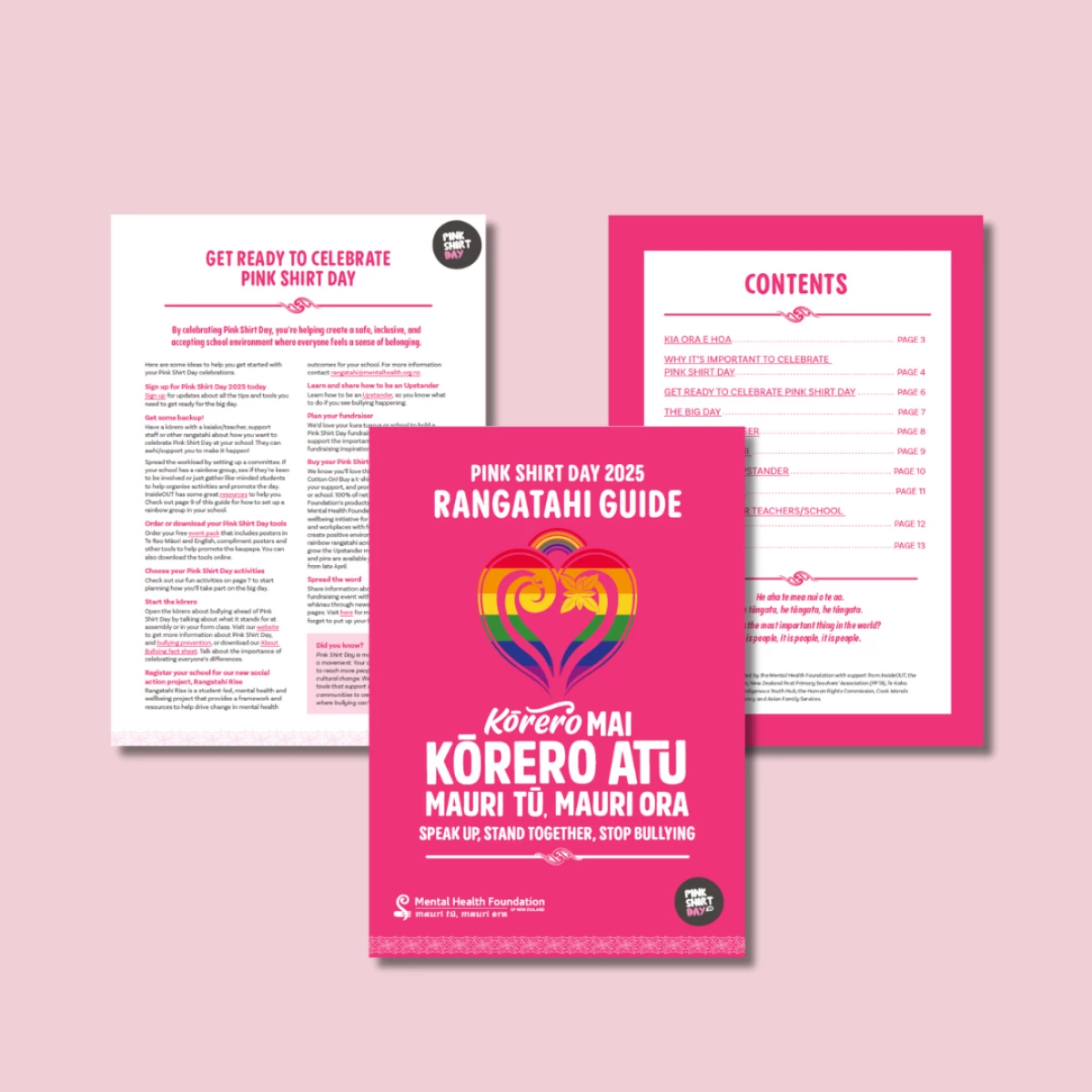Bullying Prevention Explained
Bullying is deliberate - harming another person intentionally.
Bullying involves a misuse of power in a relationship.
Bullying is usually not a one-off - it is repeated, or has the potential to be repeated over time.
Bullying involves behaviour that can cause harm it is not a normal part of growing up (Ministry of Education, n.d.).1

Physical

Verbal

Social

Cyberbullying
People can be bullied for any number of reasons, including differences in race, sexuality, gender identity, ethnicity, religion, disabilities and abilities, weight or height.
That’s why it’s so important to celebrate diversity and embrace our differences – we aren’t all the same and that’s a great thing!
Just as there are many reasons someone might experience bullying, there are also many reasons why someone might bully someone else.
They feel unhappy.
They have been the target of bullying themselves.
They want to feel important or powerful.
They don’t realise how their behaviour harms others.
They believe being different is a bad thing.
Labelling someone who bullies as a “bad person” isn’t right or helpful. While the bullying behaviour isn’t okay, someone who bullies others often needs our help and awhi/support too.
Many studies show that rangatahi who are bullied are more likely to experience mental health issues, such as depression, anxiety and suicidal thoughts. This can impact on their learning, relationships and ability to feel good about who they are.
Bullying harms the person being bullied, the person doing the bullying and can also harm those who witness it (bystanders).
Rangatahi who bully others, or are bullied (or both), are more likely to skip classes, drop out of school, and perform worse academically than schoolmates who have no conflict with their peers (OECD, 2017).
In Australia, by the time each student cohort has completed its schooling years (generally this is 13 years), the people experiencing the bullying, the people doing the bullying, their families, schools and the community will have experienced an estimated $525 million in costs associated with bullying (PwC).
In Australia, after school completion, the consequences of bullying continue and are estimated to cost $1.8 billion for each single cohort of students over a period of 20 years (PwC).
By taking bullying seriously and celebrating the diversity of tauira/students, all rangatahi can feel safe and supported, and flourish at your school!
19%
4x
While all young people are potential targets of bullying, some groups can experience higher rates. Boys, students from disadvantaged or immigrant backgrounds, and low achieving students are at higher risk. We see this trend happening not just in Aotearoa, but globally.
These terms refer to bullying based on a person’s sexual orientation or gender identity. Rangatahi/young people who identify as lesbian, gay, bisexual, transgender, queer, intersex, asexual or other sexuality and gender diverse communities, or are perceived to be part of the rainbow community, experience higher rates of bullying than students who do not. However, it is important to note that not all of these students will experience homophobic, biphobic or transphobic bullying.
51%
7%



-medium.webp)
1 Ministry of Education. (n.d.). Prevent Bullying / Welcome—Positive Behaviour for Learning. https://pb4l.tki.org.nz/Prevent-Bullying
2 Steiner-Fox, H. W., Dutt, S. J., Christiansen, S. J., Newton, H. J., Matika, C. M., Lindsay, C., Sare, M.H. , Kapeli, S.A., & Stronge, S. (2016). Rates of cyberbullying among women and men in New Zealand in 2015. NZAVS Policy Brief, 3. https://cdn.auckland.ac.nz/assets/psych/about/our-research/nzavs/Feedback%20Reports/NZAVS-Policy-Brief-Rate-of-Cyber-Bullying.pdf
3 Pacheco, Edgar and Melhuish, Neil, Online Hate Speech: A Survey on Personal Experiences and Exposure Among Adult New Zealanders (November 5, 2018). Available at SSRN: https://ssrn.com/abstract=3272148 or http://dx.doi.org/10.2139/ssrn.3272148
4 Clark, T.C., Robinson, E., Crengle, S., Grant, S., Galbreath, R.A., & Sykora, J. (2009). Youth’07 The Health and Wellbeing of Secondary School Students in New Zealand: Young people and violence. Auckland: The University of Auckland.
5 Clark, T. C., Fleming, T., Bullen, P., Denny, S., Crengle, S., Dyson, B., Fortune, S., Lucassen, M., Peiris-John, R., Robinson, E., Rossen, F., Sheridan, J., Teevale, T., Utter, J. (2013). Youth’12 Overview: The health and wellbeing of New Zealand secondary school students in 2012. Auckland, New Zealand: The University of Auckland
6 Fenaughty, J., Sutcliffe, K., Fleming, T., Ker, A., Lucassen, M., Greaves, L., & Clark, T. (2021). Youth19 brief: Transgender and diverse gender students. Youth19 and The Adolescent Health Research Group, Auckland and Wellington. https://static1.squarespace.com/static/5bdbb75ccef37259122e59aa/t/607cb8431453ca0b05c53bb8/1618786373138/Youth19+Brief_Transgender+and+diverse+gender+students+April2021.pdf
7 Fleming, T., Archer, D., King-Finau, T., Dewhirst, M., & Clark, T. (2021). Youth19: Safety & violence brief. Youth19 and The Adolescent Health Research Group, Auckland and Wellington. https://static1.squarespace.com/static/5bdbb75ccef37259122e59aa/t/6168c9dbcfcd7750fb6b8aff/1634257377085/ Youth19+Safety+and+Violence+Brief.pdf
8 Fenaughty, J., Clark, T., Choo, W. L., Lucassen, M., Greaves, L., Sutcliffe, K., Ball, J., Ker, A., & Fleming, T. (2021). Te āniwaniwa takatāpui whānui: Te aronga taera mō ngā rangatahi: Sexual attraction and young people’s wellbeing in Youth19. Youth19 Research Group, The University of Auckland and Victoria University of Wellington.
9 Adams, J. Dickinson, P. & Asiasiga, L. (2012). Mental health promotion and prevention services to gay, lesbian, bisexual, transgender, and intersex populations in New Zealand: Needs assessment report. Auckland: Te Pou o Te Whakaaro Nui, The National Centre of Mental Health Research, Information and Workforce Development.












